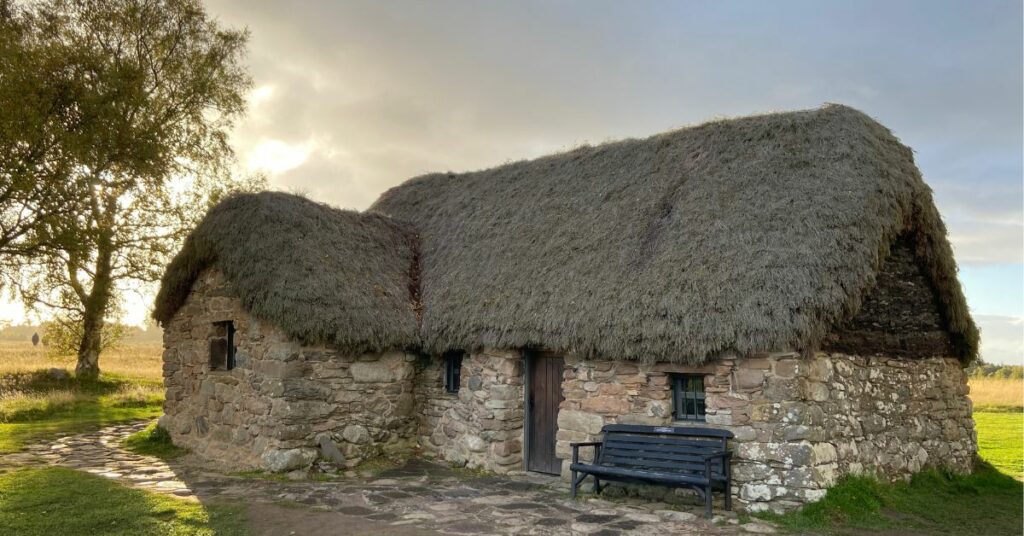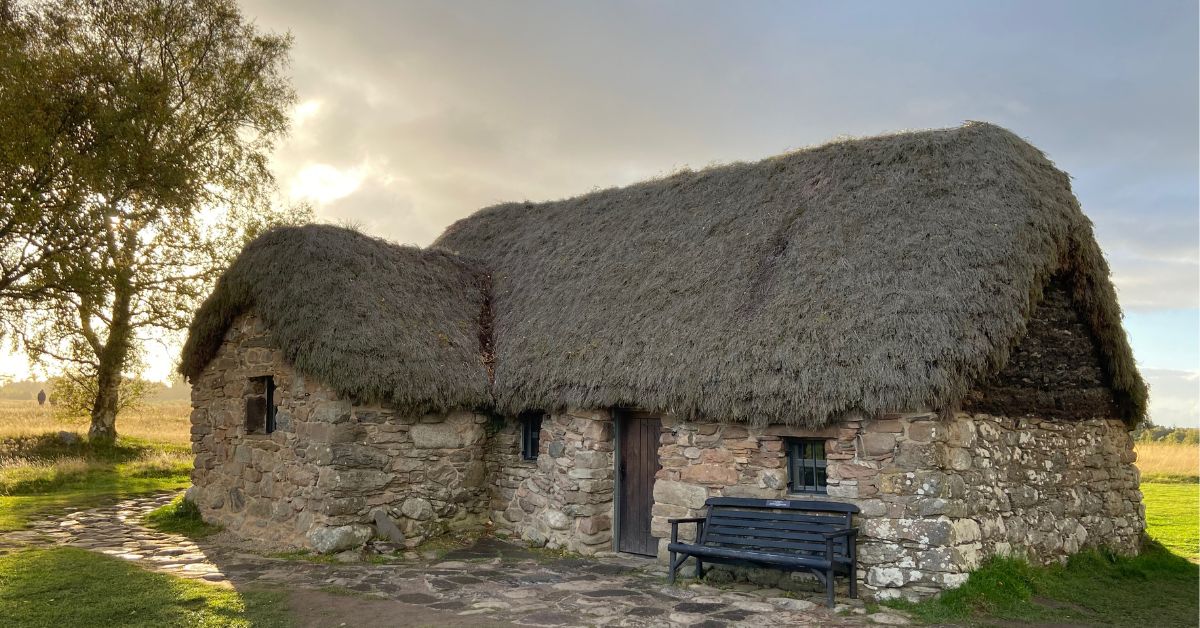
Culloden Battlefield
Culloden Battlefield is an important historical site just outside of Inverness in the Scottish Highlands. Culloden Battlefield marks the site where one of the most decisive battles in British history was fought on April 16th 1746 on Drumossie Muir.
The 1745 Jacobite Rising led by Charles Edward Stuart “Bonnie Prince Charlie” and his forces were defeated by the Government Hanoverian forces of George II and led by the Kings son The Duke of Cumberland and his loyalist troops. Both were just 24 years old when they led their men into battle.
Prince William Augustus the Duke of Cumberland and Charles Edward Stuart “Bonnie Prince Charlie were actually related and cousins.
Image/The National Trust for Scotland/Culloden Battlefield
If you want to read more on the family links between the two Princes have a read of the Culloden Battlefield Blog which is a great resource.
The Highland Clearances post Culloden
After the battle of Culloden, the Highland clearances started with many Highlanders being forced from their tenanted homes and farms by the elite aristocracy and forced to relocate.
The Clan system was failing before Culloden, however, the aftermath of Culloden expedited this process with some brutal consequences.
The Highland clearances which occurred between the 1750’s right until circa 1860 was a massive event changing the face of Scotland, The Colonies, North America and the world forever more.
The Highland Clearances of Scotland in the 1700s and 1800s had a profound impact on North America where many displaced Scottish people went to start a new life in the “New World”.
Many of the immigrants to North America had no choice, however, many others went in search of a new life and better prospects in the new world.
These clearances, which began as a series of forced evictions, saw thousands of Scots being forced off their land as landlords sought to replace them with large sheep farms. Some of the most brutal evictions took place at the 1st Duke of Sutherlands estate near the family seat at Dunrobin Castle.
This brutal period in Scottish history saw hundreds of communities destroyed and entire generations uprooted from their ancestral homelands as they were given no other choice than to leave the area.You can still see the historic scar on the landscape of once inhabited settlements and rural homes.
It is estimated by some that 10% of the U.S population is of Scots descent with many more in Canada and elsewhere around the globe.
In the wake of these clearances, there was a mass emigration of Scots to North America. It is estimated that over a million people left Scotland during this period, with most crossing the Atlantic to either the United States or Canada.Its important to note that many left Scotland in search of a better life in the “New World” and not all were driven from their homes after the Battle of Culloden.
This influx of immigrants changed the culture and demographics of both countries and brought with it certain aspects of Scotland’s culture such as bagpipes, tartans and kilts, all now accepted symbols of North American identity. The Scots helped shape the modern world with the Scottish influence at this time and innovation shaping life as we know it today.
The legacy of the Highland Clearances lives on in North America today through physical reminders such as place names such as ‘Inverness’ in Nova Scotia & Florisda, or Clan associations formed by descendants who still proudly maintain ties with their home country.
Emotionally however, the effects are more difficult to measure, for those who went through an immensely difficult time leaving all they knew behind only for them or their descendants never to return again.
Culloden Battlefield Death Toll
The Battle of Culloden was a bloody battle which lasted only around 45 minutes, although the aftermath and death toll continued to rise after the battle.
The Jacobite forces suffered around 1250 – 1500 deaths during the battle, whilst the Governments Hanoverian forces suffered around 50 deaths, with a further 276 wounded.
The government forces were made up of Highland Clans, Scots from elsewhere, English, Irish and possibly German Hanoverian forces. The Jacobite forces were made up of Highland Clans, Lowland Scots, English and French and mainly Catholics loyal to the Staurt case.
Tour Culloden Battlefield
For those with links to this historic time and site everywhere, Culloden Battlefield is an emotive place, with layers of history and remembrance woven into every inch of its soil.
Visitors can explore its rugged and unspoiled landscapes to gain an insight into what life was like here during that fateful battle in 1746.
If you visit Inverness or on a private tour of the Highlands then be sure to visit the site which has an estimated 200,000 + visitors per year and experience this site and the historical importance of this point in history.
Culloden Battlefield Opening times
Access to Culloden Battlefield is possible all year round and is free too access if you are just looking to walk the field. Culloden Battlefield visitor centre 2023 opening times and prices are below.
Culloden Battlefield Visitor Centre: 2023 Opening Times
18 Jan – 28 Feb: Wed – Sun: 10am to 4pm
1 Mar – 31 Oct: Daily: 9 am to 6 pm
1 Nov – 31 Nov:Daily: 9 am to 4 pm
1 Dec – 23 Dec: Wed – Sun: 10 am to 4 pm.
On site there is a visitor centre dedicated to guiding visitors through its rich history with interactive exhibitions, artefacts and films.
There are many artefacts on display here which provide insight into how both sides engaged in battle, such as swords, muskets and ammunition, alongside insights into everyday life at this time such as artefacts from clothing, crockery and weapons.
If you are visiting Culloden Battlefield then why not include Clava Cairns, the 4000+ year old burial cairns and standing stones located within the new battlefield boundary and only 1.5 miles by road to Culloden Battlefield Visitor Centre.
The visitor centre has a great gifts shop with related clan gifts, souvenirs and books which is worth a visit.
There is also a cafe on site serving light lunches and refreshments.
The national trust for Scotland also has native farm breeds of Highland Cows, horses and goats on site to manage this large site of major historical importance. This also helps to try and preserve the site as much as possible to what it was like in 1746.
The 2023 season will see the introduction of Cavalry tours of the battlefield which we look forward to seeing.
Culloden Battlefield Entry Price
ADULT – £14.00
FAMILY – £30.00
ADULT FAMILY – £25.00
CONCESSION – £11.00
National Trust for Scotland members access the site and visitor centre for FREE with memberships available from £4.85 per month.
Culloden Battlefield and Visitor Centre – Address: Culloden Moor, Inverness IV2 5EU
Phone: 01463 796090 – Web: https://www.nts.org.uk/visit/places/culloden

